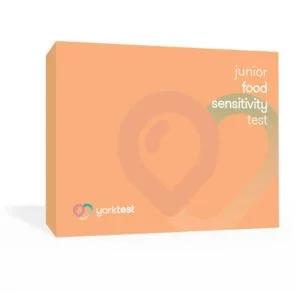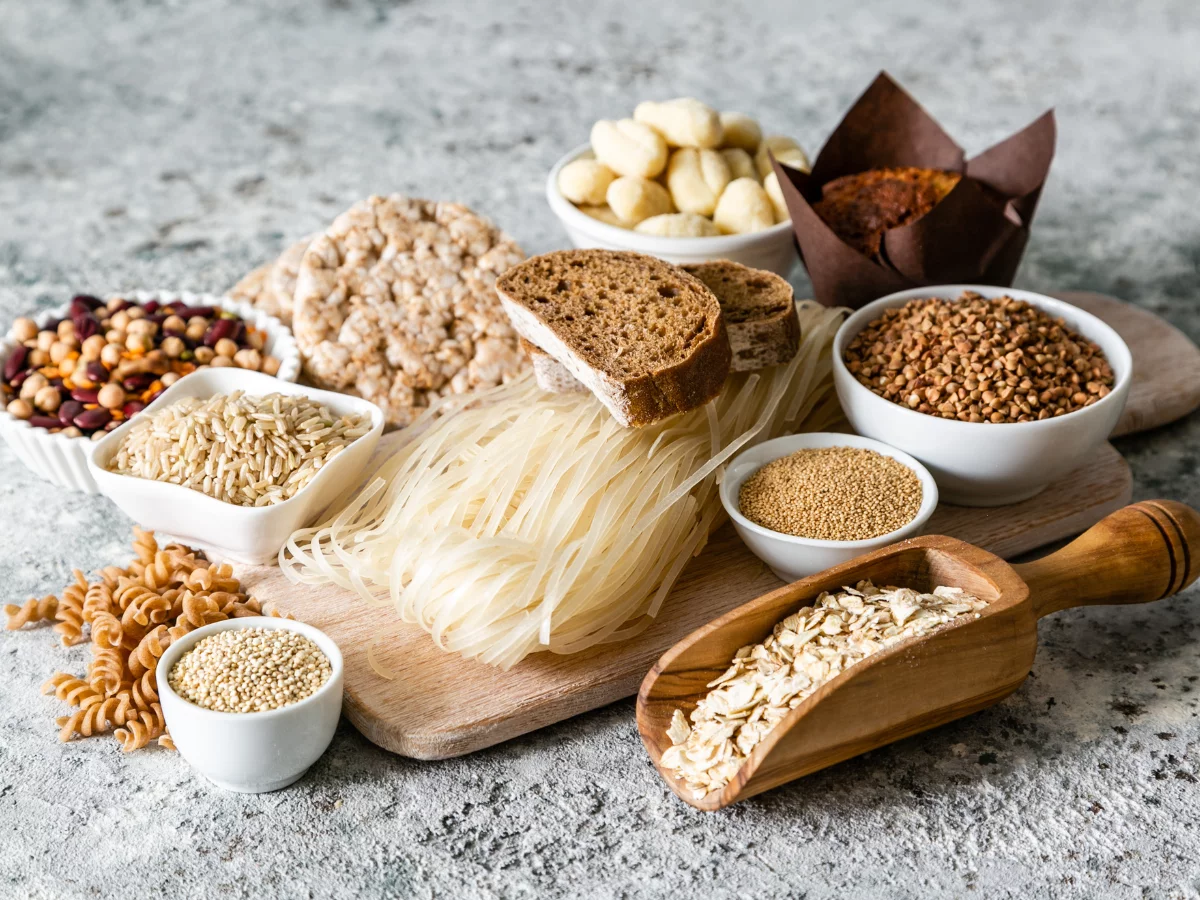- What is Gluten?
- Why Is Gluten Bad For Some Of Us?
- What Are The Most Common Gluten Health Conditions?
- Celiac Disease
- Gluten Intolerance
- Wheat AllergyÂ
- Wheat intolerance
- What Are The First Signs Of Gluten Intolerance?
- How Long After Eating Gluten Do Symptoms Start?
- How Long Does A Gluten Attack Last?
- How long after eating gluten do you feel sick?
- How Long Does Gluten Stay In Your System?
- Foods To Avoid If You Have A Gluten Intolerance
- Common Gluten-Free Foods
- What Does Gluten Do To Your Gut?Â
- Is There A Test For Gluten Sensitivity?
Getting to grips with a gluten intolerance can feel like a minefield, but it really doesn’t have to be that way. It used to be that gluten intolerances, wheat allergies or celiac disease were quite misunderstood, but with new research and medical findings being produced daily, there is more information out there to help people than ever before.Â
Whether you’ve recently been diagnosed with a gluten-related condition, are finding out that you have a gluten intolerance later in life, or you’re researching for a loved one, if you want to understand gluten proteins and how to deal with them then you’ve come to the right place. In this blog, we look at what gluten does to your body and examine why gluten is bad for some people.Â
What is Gluten?
Gluten is found in grains such as wheat, barley, rye, and spelt, and is used to bind foods together in baking. It’s what you’ll usually find in the likes of bread, thanks to the elasticity it provides for the flour mixture when water is added.
Are you wondering if gluten has protein in it? In short, yes, it does. The proteins in gluten can be found in many other liquid-based consumables like sauces and gravies. Gluten is employed as a thickening agent, so it can easily sneak into a diet undetected – that is, until the gluten intolerance symptoms arise in sufferers after it is consumed.
Why Is Gluten Bad For Some Of Us?
Some people suffer from gluten-related conditions that cause unpleasant, uncomfortable, and sometimes debilitating reactions in their immune systems. For instance, a gluten intolerance means that gluten proteins are treated as foreign bodies when they enter a digestive system, so an inflammatory response (an IgG response, in the case of intolerance) is triggered to fight them. This response can manifest as anything from bloating and abdominal pain, to nausea and vomiting.
The severity of these responses depends upon the condition that the person is suffering from and their reactiveness to gluten proteins therein. A gluten intolerance can appear later in life, sometimes with mild symptoms, whilst celiac disease is a life-long, autoimmune condition that causes much more severe reactions that can damage the gut wall and lead to malnutrition.
What Are The Most Common Gluten Health Conditions?
There are a number of ways in which people can suffer from reactions to gluten, so it’s crucial to understand the differences before you drift into the realms of self-diagnosis or misdiagnosis. Here are the most common gluten-related conditions:
Celiac Disease
Celiac disease is the most serious gluten-related condition. The condition affects around 1 in 133 Americans or 1% of the US population. However, recent studies are suggesting that this figure may be much higher. Celiac disease can have a detrimental effect on a sufferer’s wider health and well-being. This genetic autoimmune disease can damage the villi of the small intestine and interfere with the absorption of nutrients from food. Its symptoms can be severe, so gluten must be entirely eradicated from a sufferer’s diet. Technically speaking, celiacs shouldn’t touch gluten at all.
Gluten Intolerance
A gluten intolerance produces similar symptoms to those of celiac disease, but they are often less severe and can take longer to surface. Gluten intolerances are significantly more common than celiac disease, with around 6% of Americans being gluten intolerant. Symptoms can include diarrhea, constipation, bloating, headaches, and tiredness.
Wheat AllergyÂ
An allergy to wheat can comprise reactions to any one of four proteins that are found in wheat: albumin, globulin, gliadin, and gluten. Approximately 2.4 million people in the United States have a wheat allergy. Allergies to gluten specifically are rarer than the rest, and are also commonly mistaken for celiac disease.
Wheat intolerance
An intolerance to wheat means that a person can experience the same symptoms as a gluten intolerance, but that doesn’t mean that they have both conditions. For example, they might only be intolerant to albumin, but not to gluten. A person who is gluten intolerant is also wheat intolerant because gluten proteins are found in wheat, so this means that a wheat intolerant person won’t necessarily have to avoid gluten if they are reactive to a different protein.
What Are The First Signs Of Gluten Intolerance?
Most sufferers report digestive discomfort as their first noticeable symptom of a gluten intolerance. This is commonly described as abdominal pain and can be linked to bloating, constipation, or diarrhea.
It’s all too easy for people to put discomfort down to a bad meal or an off day, and it’s an issue that’s made worse by the fact that the symptoms can take up to three days to appear after gluten has been consumed. However, it’s important to seek help from a doctor if signs and symptoms are appearing and, of course, if they’ve appeared more than once.
How Long After Eating Gluten Do Symptoms Start?
Many people start noticing signs of gluten intolerance within 6-48 hours of consumption. For people with celiac disease or non-celiac gluten sensitivity, symptoms of gluten exposure usually begin between a few hours to a few days after eating foods that contain gluten. Gut inflammation usually sets in within 6 hours. Bloating, pain, and diarrhea often start anywhere from 12 hours to 2 days later as the gluten works its way through the intestines.Â
However, the timing and severity of symptoms can vary quite a bit from person to person. Some people experience near-immediate gastrointestinal upset that subsides quickly, while others report more delayed onset of symptoms that persist for many days after gluten exposure. Factors like the amount of gluten consumed and the extent of intestinal damage also impact the reaction time. With severe gluten intolerance, even small traces of cross-contamination can trigger a faster response.
How Long Does A Gluten Attack Last?
A gluten attack, which usually occurs after the accidental consumption of gluten by someone with celiac disease or a gluten sensitivity, can last from a few hours all the way up to several months. However, the severity of your symptoms may fluctuate greatly depending on how much gluten was consumed and individual intolerance factors.Â
For example, the immediate symptoms which usually appear within a few hours include bloating, nausea, headache, or fatigue, while lingering effects, which typically last 1-2 weeks, include fatigue and discomfort.
How long after eating gluten do you feel sick?
Rather surprisingly, one of the most commonly asked questions about reactions to gluten is how long does it take to feel sick? As previously alluded to, this can depend greatly on the individual factors. Some people may start to feel sick within 30 minutes, while others may experience a delayed reaction that could take up to 24 hours.
How Long Does Gluten Stay In Your System?
For most people, gluten typically stays in the system for between 24-72 hours after being ingested. Gluten proteins are relatively large molecules that the body does not fully digest. After being eaten, gluten passes through the stomach and reaches the small intestine within a few hours. It takes about 2-6 hours for food to transit through the small intestine, which is where most gluten absorption happens. From there, any remaining undigested gluten travels to the large intestine where transit time ranges from 12-72 hours.
Throughout this journey, different enzymes work to break down gluten proteins into amino acids. For those with impaired gluten digestion, larger peptide fragments can remain in the intestines for a day or more, contributing to symptoms. After gluten exposure, intestinal biopsy samples may show immune reactions for up to 4 weeks. However, the bulk of the gluten gets eliminated within the first couple of days. Strictly adhering to a gluten-free diet allows the system to be fully clear.
Foods To Avoid If You Have A Gluten Intolerance
So, what are the worst foods for gluten intolerances and sensitivities? When following a gluten-free diet, it’s important to be aware that gluten can be found in wheat, rye, and barley, as well as foods made using these grains. Gluten is often used as a thickening agent or additive in many processed foods, sauces, and even some meat products. Identifying all potential sources of gluten isn’t an easy task, so make sure to carefully check the ingredient labels on packaged foods for any traces of the following:
- Wheat (starch, bran and germ)
- Couscous
- Cracked and durum wheat
- Emmer
- Farina
- Faro
- Gliadin
- Kamut
- Matzo
- Semolina
- Spelt
- Bulgur
- Barley, barley malt, malt extract, or malt flavoring
- Rye
Common Gluten-Free Foods
Luckily, there are many nutritious and delicious foods that are naturally gluten-free:Â
- Fruits and vegetables – All fresh fruits and vegetables are gluten-free. This includes produce like apples, oranges, bananas, potatoes, broccoli, tomatoes, carrots, etc.
- Meat and Poultry – Beef, chicken, pork, fish, eggs, and other meats are naturally gluten-free as long as they are not breaded, fried or marinated in gluten-containing sauces. Check out our Gluten-free BBQ guide for tasty meat recipes.
- Dairy – Milk, plain yogurt, cheese, butter, and other unflavored dairy products do not contain gluten. Look for brands that are certified gluten-free.
- Grains – Options like rice, corn, quinoa, millet, buckwheat, amaranth, and certified gluten-free oats make good substitutes for wheat.
- Nuts and Seeds – Almonds, walnuts, sunflower seeds, pumpkin seeds, and nut butters are safe gluten-free choices.
- Beans and Legumes – All types of dried or canned beans are naturally gluten-free, including black beans, kidney beans, chickpeas, lentils, and soybeans.
- Oils and Vinegars – Olive oil, coconut oil, vegetable oil, balsamic vinegar, apple cider vinegar, and distilled vinegars are generally gluten-free, though you should avoid malt vinegar.
What Does Gluten Do To Your Gut?Â
When someone with celiac disease or gluten sensitivity consumes gluten, it can have various effects on the gut. Some of the effects may include an inflammatory response, damage to the Villi, digestive distress, changes in Gut Microbiomes and increased gut permeability, or leaky gut.Â
Is There A Test For Gluten Sensitivity?
Upon receiving a recommendation from a doctor, our Food Sensitivity Tests can get to the bottom of your apparent gluten-related condition. Rather than risk a self-diagnosis, our tests use lab-developed methods to gauge your IgG reactions to foods and drinks for intolerances and your IgE reactions for allergies.
Our kits do not test for celiac disease, but the results can help a doctor to eliminate the possibility of other conditions during a diagnosis. If you’re worried that you or a loved one might be suffering from a gluten-related condition, a doctor’s advice must be sought out before taking one of our tests. We hope that you’ve now garnered a better understanding of how gluten interacts with your body and how some people may have complications with it. However, it’s worth noting that gluten can be good for you. However, if you have one of the conditions mentioned in this blog, careful monitoring and medical advice is advised.






